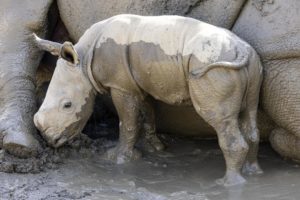Everyone must commit to preserving the Earth’s “invaluable and irreplaceable wildlife,” the UN chief said on Wednesday in his message for World Wildlife Day.
“Each year…we celebrate the beauty and wonder of our planet’s wild plants and animals,” reminded Secretary-General António Guterres, describing the day as an opportunity to celebrate the many beautiful and varied forms of wild fauna and flora and “to raise awareness of the multitude of benefits that their conservation provides to people.”
Our link to nature
Beyond a moral duty to sustain the Earth, Mr. Guterres reminded that “humanity depends on the essential products and services that nature provides, from food and fresh water to pollution control and carbon storage”.
“By damaging the natural world, we threaten our own well-being,” he added.
Today, all around the world, wildlife is in peril as a quarter of species face extinction – in large part, because we have destroyed nearly half of the ecosystems in which they live.
“We must act now to reverse this trend,” underscored the UN chief. © BES/Joshua F. Goldberg
© BES/Joshua F. Goldberg
Celebrate nature
Animals and plants that live in the wild have an intrinsic value and contribute to the ecological, genetic, social, economic, scientific, educational, cultural, recreational and aesthetic aspects of human well-being – and to sustainable development.
And everyone must recognize the “urgent need to step up the fight against wildlife crime and human-induced reduction of species,” he said.
Noting their “wide-ranging economic, environmental and social impacts,” Mr. Guterres drew attention to Sustainable Development Goal 15, which focuses on halting biodiversity loss.
“Let us remind ourselves of our duty to preserve and sustainably use the vast variety of life on the planet. Let us push for a more caring, thoughtful and sustainable relationship with nature,” he said.
Ecosystems in the spotlight
This year’s day also highlights the importance of the UN Decade on Ecosystem Restoration, which was kicked off last year and runs until 2030.
Ecosystems are only healthy when their component species thrive.
If just one keystone species disappears, an entire ecosystem can start to decline and die, which is why actions to protect individual species must go hand-in-hand with restoring entire ecosystems.




